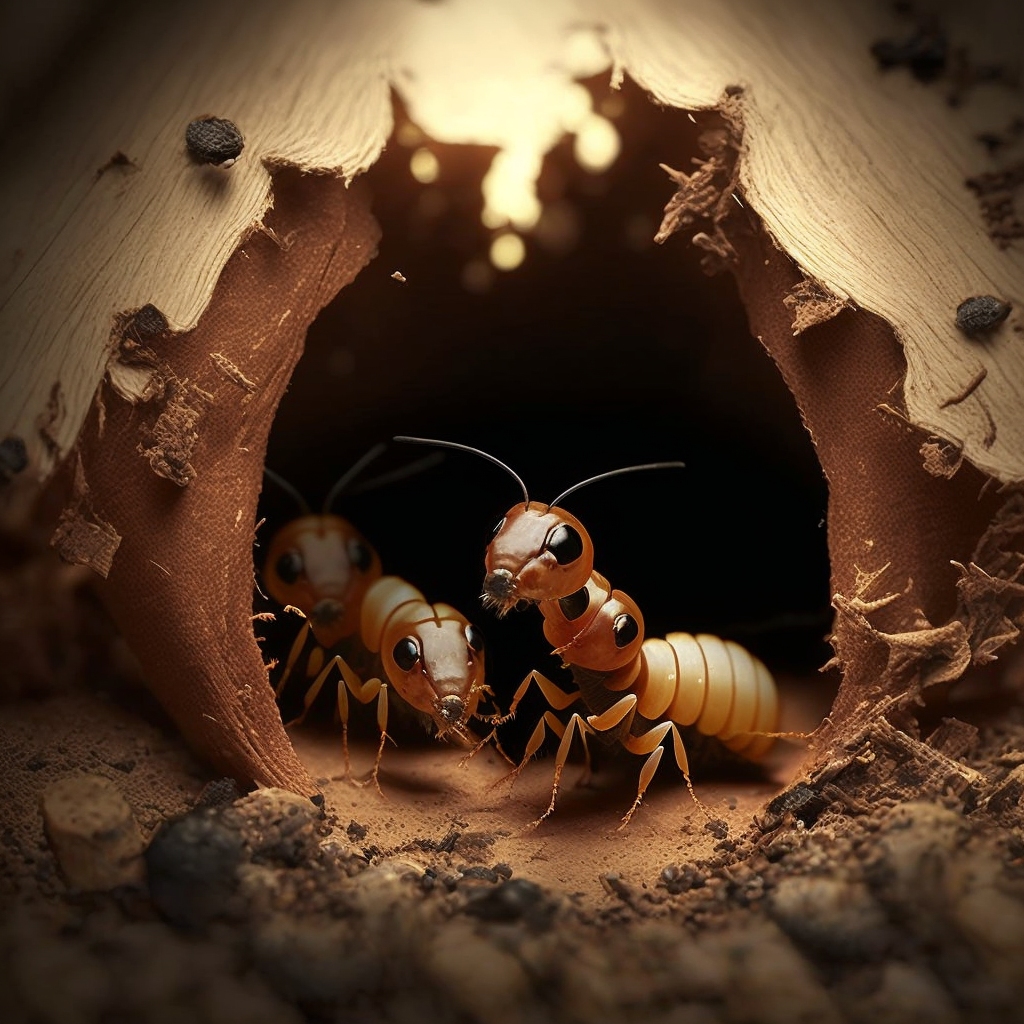Do Termites Make Noise? all you need to know
Termites are known for their ability to quietly and efficiently chew through wood, but do they make noise?
Do termites make noise?
Termites are generally quiet insects, and they do not produce sounds in the same way that humans do. However, they can make some low-level noises that may be audible to humans under certain conditions.
Types of noise made by termites
There are several types of noise that termites can make:
- Stridulation: Some species of termites, such as the drywood termite, are capable of stridulation, which is the act of rubbing body parts together to produce a sound. The sound produced by stridulation is usually a low-level hissing or buzzing noise that is difficult for humans to hear.
- Mandibular grinding: Termites have mandibles, or jaws, that they use to chew wood. When termites are feeding, their mandibles may make a faint grinding noise as they chew. This noise is usually too low for humans to hear, but it can be amplified by placing a microphone near a termite colony.
- Winged termites: When termites are preparing to swarm, or fly off to start a new colony, they may make a rustling or fluttering noise as they fly. This noise is typically only audible when the termites are close to the ground or when there are a large number of termites swarming at once.
Factors that affect the noise made by termites
There are several factors that can affect the amount of noise that termites make:
- The species of termite: Different species of termites have different behaviors and abilities, so they may make different types and levels of noise.
- The age of the termites: Younger termites may be more active and produce more noise than older termites.
- The activity level of the termites: Termites are more likely to make noise when they are actively feeding or swarming.
- The location of the termites: Termites may be more or less audible depending on where they are located. For example, termites in the walls of a house may be more difficult to hear than termites in a tree trunk.
Can termites be heard by humans?
It is generally difficult for humans to hear the low-level noises that termites make, especially if the termites are located inside walls or other structures. However, in some cases, the noise made by termites may be amplified by a microphone or other device, or it may be possible to hear the noise if the termites are swarming or flying close to the ground.
How do termites communicate?
In addition to making noise, termites also communicate using pheromones, which are chemical signals produced by their bodies. These pheromones allow termites to communicate with each other and coordinate their behavior. For example, termites can use pheromones to mark trails to food sources, alert other termites to danger, and attract mates.
Termites also communicate using vibrations. They can sense vibrations through their bodies and use them to communicate with each other, even when they are separated by solid objects such as walls. This ability to communicate through vibrations is especially useful for termites that live inside wood, where they are isolated from each other and cannot use pheromones to communicate directly.
Do termites make noise to attract mates?
Some species of termites, such as the drywood termite, use stridulation to attract mates. However, in most cases, termites rely on pheromones rather than noise to attract mates. When a termite is ready to reproduce, it releases pheromones that attract potential mates. The termites then use their antennae to detect the pheromones and locate each other.
Do termites make noise to warn other termites of danger?
Termites have a number of defense mechanisms to protect themselves from predators, including chemical secretions and physical defenses such as mandibular teeth. In some cases, termites may also use vibrations to warn other termites of danger. For example, when a termite is attacked by a predator, it may produce vibrations that alert other termites in the colony to the threat. The other termites can then respond by increasing their own defensive behaviors or fleeing to a safer location.
Conclusion
In conclusion, termites are generally quiet insects that do not produce sounds in the same way that humans do. However, they are capable of making some low-level noises through stridulation, mandibular grinding, and the rustling of their wings. They also communicate using pheromones and vibrations, which allow them to coordinate their behavior and protect themselves from danger.



